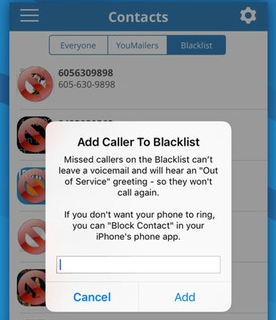(Updated Sept. 2016)
If you received a robocall or ten recently, you’re in good company. Mobile, web and landline numbers in the U.S. were hit by an estimated 2.64 billion robocalls in August of 2016–that’s 986 robocalls every second and a 9.3 percent increase over July. The number is the highest since popular robocall blocker YouMail launched its monthly U.S. Robocall Index in mid 2015, and beat the previous record of 2.5 billion monthly robocalls in March of this year.
Texas residents were hit with the most robocalls with 298.3 million calls received, followed by California, Florida, New York and Georgia. Southern states were home to 15 of the top 20 most robocalled area codes, with residents of Atlanta and Washington, D.C. averaging more than one robocall per person daily.
The good news is that some good phone habits along with a call screening and blocking app will help protect you from most of those annoying calls.
How to stop unwanted calls:
Robocall blocker apps & more
To reduce the number of robocallers who call you, there are a few things to do or not do. The most effective is to add a robocall blocker app to your mobile phone. Many such apps are free—at least for the essential call blocker features. You can see what’s available in your favorite app store by searching for “robocall blocker” or “call blocker”.
 One of the more popular robocall blocker apps is from YouMail, who you might know for its voicemail and messaging service. What sets YouMail apart from similar apps is its huge online database of blacklisted numbers. So when you get a strange call, the app not only can tell you who it is, but also can tell the caller that your number isn’t in service. YouMail says its database is constantly updated thanks to algorithms that identify robocalling patterns and frequently reported numbers. And if you want to know the worst robocaller offenders in the U.S. and other robocalling trends, the company now issues a free monthly report—read on below to see their latest findings.
One of the more popular robocall blocker apps is from YouMail, who you might know for its voicemail and messaging service. What sets YouMail apart from similar apps is its huge online database of blacklisted numbers. So when you get a strange call, the app not only can tell you who it is, but also can tell the caller that your number isn’t in service. YouMail says its database is constantly updated thanks to algorithms that identify robocalling patterns and frequently reported numbers. And if you want to know the worst robocaller offenders in the U.S. and other robocalling trends, the company now issues a free monthly report—read on below to see their latest findings.
Besides a robocall blocker app, another step to take in fighting unwanted callers is to not answer any calls from a number you don’t recognize. If they leave a message, don’t call them back right away. And if it’s a debt collector calling, it’s often advisable to not communicate with them at all–unless of course you want to pay back a real debt.
Finally, you can report an unwanted call—even if you don’t know who it is—on any of the numerous online “who called me” unwanted call directories (YouMail has a good one). There, you can look up a number, find out what others are saying about it, and add your own comment. That process takes only a few seconds and you’ll feel good about warning others about your problematic callers.
But you can forget about the national “do not call” registry. “The Do Not Call Registry has been largely ineffective because it was created for live telemarketers, not automated robodialers,” says YouMail CEO Alex Quilici. “That’s why we are building a coalition of fed-up Americans who want to take action to stop this national insanity.”
Who’s robocalling you?
 Not surprisingly, debt collectors continue to be the leading robocallers by far in the U.S., making up 17 of the top 20 types of callers YouMail tracked in its latest robocall report, called the National Robocall Index™. Bank or credit debt collectors top that list, followed by retailers and student loan providers.
Not surprisingly, debt collectors continue to be the leading robocallers by far in the U.S., making up 17 of the top 20 types of callers YouMail tracked in its latest robocall report, called the National Robocall Index™. Bank or credit debt collectors top that list, followed by retailers and student loan providers.
YouMail reports that the major credit card issuer Capital One continues to be the most active robocalling number for the 11th straight month, with nearly 365 million robocalls in the U.S. over the past 12 months–a million a day. A bank debt collector, a retail debt collector, and a student loan collector each also own two phone numbers on the top 20 list.
California robocallers placed 206.7 million calls in August, surpassing Texas to become the state making the most monthly robocalls. Auto-dialers in Los Angeles placed 67.7 million calls during August, causing L.A. to unseat Chicago as the U.S. city making the most robocalls. Other hotspots for robocalling included New York, NY (63.9 million calls placed); Columbus, OH (60.1 million); Dallas, TX (56.0 million); and Chicago, IL (54.4 million).
Interestingly, YouMail’s Robocall Index might tell us how well or not people are faring economically in a certain city or area, the company suggests. For example, a high number of debt collectors calling a certain area would seem to indicate that there are a lot of people living in debt there.
You can find the latest monthly National Robocall Index report here on YouMail’s website.
Find out more about YouMail in its directory profile page on MobileVillage. YouMail recently won a Superstar Award in the 2016 Mobile Star Awards.





